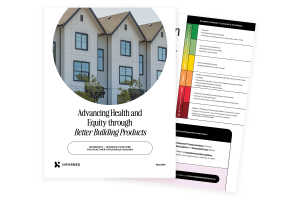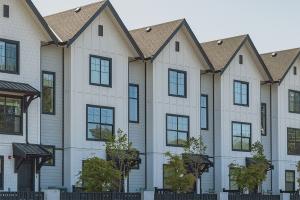
New Report Reveals Material Health Impacts and Wide-Spread Plastic Building Products Used in Minnesota Buildings
Habitable released a rigorous assessment of how the Minnesota real estate sector's material choices impact human and environmental health.
WASHINGTON, DC, UNITED STATES, May 21, 2024 /EINPresswire.com/ -- Habitable, formerly Healthy Building Network, has released a rigorous assessment of how the Minnesota real estate sector's material choices impact human and environmental health. For the building product categories analyzed in the study, Habitable found that nearly 70% of typical products specified contain or rely on the most hazardous chemicals.
Habitable’s report findings highlight that these building products not only have the potential to impact the occupants of the buildings, but also exacerbate pollution throughout products’ life cycles, posing significant risks to human and environmental health.
Habitable’s InformedTM guidance, which ranks products’ health impacts from worst- (red) to best-in-class (green), was used to examine the chemical make-up of products specified across 36 affordable housing projects funded through Minnesota’s public funding process, and other financial institutions. The report’s analysis took into account five categories: flooring, paint, countertops, insulation, and water pipes.
"These findings are not unique to Minnesota or the affordable housing sector," says Gina Ciganik, Habitable CEO and former affordable housing developer. We see similar findings across the country and in other real estate typologies. Widespread action is urgently needed throughout the building sector to address the negative environmental, climate, and human health impacts of toxic product selection." Ciganik further explained that “we chose to conduct our research on affordable housing because these partners are incredibly innovative and values aligned, and are poised to lead the building sector towards a healthier standard for building.”
The report emphasizes that these health impacts are disproportionately felt by Black and Brown populations, low-income communities, and children.
Additionally, many of the specified products are made of plastic, which not only contributes to the production of plastic waste but also perpetuates reliance on fossil fuels, contradicting efforts to combat climate change.
Local partners are already engaged with Habitable in co-designing a path towards selecting better products.
Richard Graves, the Executive Director of the University of Minnesota’s Center for Sustainable Building Research (CSBR) is working in partnership with Habitable to develop a plan to advance positive change.
"I am excited to see the building material research from Habitable. It is a reminder that the goal for our projects is not only health for ecosystems and the climate, but most importantly the health and well-being of the people in the houses, workplaces and communities where we need to thrive. Development needs to strive to provide a healthy environment for all people and living systems now and in a dynamic future."
Michelle Baltus Pribyl, Housing Studio Lead at LHB Architects volunteered to participate by becoming a demonstration project partner, receiving technical assistance from the Habitable research team to better understand the products she specifies, and opportunities to identify healthier options that fit cost and performance goals.
“We often design buildings for people from underserved populations, children, and those who have multiple health issues and we believe it is important to thoughtfully specify products and finishes that contribute to their health and well-being. We also believe strongly in supporting the health of our environment and leading a path towards regenerative design. Participating in Habitable’s program provides the opportunity to create both healthier homes and a healthier planet."
The report offers solutions, case studies, and cost effective suggestions for leaders throughout the building sector to make healthier choices. This baseline understanding of the current state of materials is the first step in a process to co-design a strategy for improvement with local leaders. Habitable will begin a community engagement initiative this summer to work with local partners to build knowledge and identify solutions for healthier product choices. To download the report and learn how you can take action, visit this page on our site.
About Habitable:
Habitable is reimagining the materials economy to rebalance the health of humans and the planet. Building upon a 20-year legacy as Healthy Building Network, Habitable will pursue efforts to reduce pollution, mitigate climate change, and create a more just and equitable future for all.
This report was funded by The McKnight Foundation's Vibrant and Equitable Communities program.
Contact Information:
For more information, please contact Gina Ciganik, CEO, at gciganik@habitablefuture.org
###
Gina Ciganik
Habitable (formerly Healthy Building Network)
+1 877-974-2767
gciganik@habitablefuture.org
Visit us on social media:
LinkedIn
Instagram
EIN Presswire does not exercise editorial control over third-party content provided, uploaded, published, or distributed by users of EIN Presswire. We are a distributor, not a publisher, of 3rd party content. Such content may contain the views, opinions, statements, offers, and other material of the respective users, suppliers, participants, or authors.



